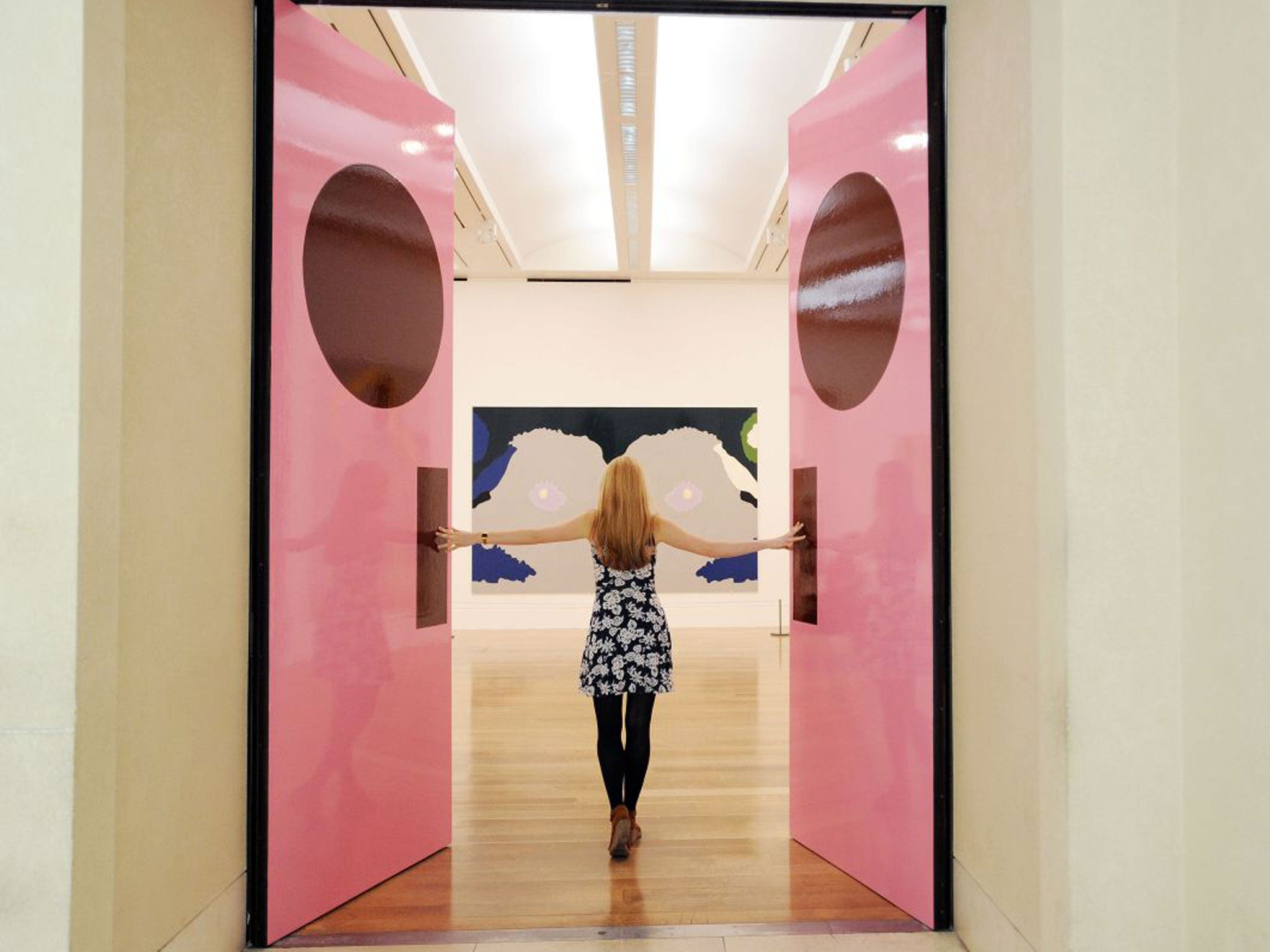Charles Darwent on art: Brushes out! It's the Gary Hume and Patrick Caulfield show
One was a reluctant pop artist, the other a YBA – and each defined an era. But by uniting them, Tate Britain reveals them to be brothers-in-paint

If you count the side-by-side exhibitions in Tate Britain's Linbury Galleries as a single show – and there are good reasons why you might – then they bracket a neat half-century of British painting, from 1963 to today, from Patrick Caulfield's Concrete Villa, Brunn to Gary Hume's Yellow Window. There are other connections between these two works, the oldest Caulfield on show and one of Hume's most recent.
Caulfield's Villa is notably oddball. It shows a modernist house, taken from a black-and-white photograph, superimposed on a modernist grid. Highly untypical of Caulfield, who made his name in saturated colour, it is painted in shades of grey. Concrete Villa was made when he was still at the Royal College of Art, in the same year as David Hockney. It toys with Pop – Richard Hamilton's Just what is it that makes today's homes so different? had appeared seven years before – but is much more interested in what it isn't than in what it is. What Concrete Villa isn't, in spades, is modernist. Peering from the building's Bauhaus balcony is a little man, Rapunzel-like but bolshie. It is a self-portrait of Patrick Caulfield.
Fast forward half a century and you find yourself at Gary Hume's Yellow Window. Hume, who also made his name in colour, although of a shinier kind – wet-looking household gloss laid thickly on aluminium panels – is a Caulfield fan. His window could be one of the steel-framed ones in Caulfield's Concrete Villa, although it may equally be the grid that sits behind it. Like one of those optical tricks in which you see either a pair of profiles or a wine glass, whether you take Yellow Window as abstract or representational is entirely up to you.
That isn't the end of Hume's game, though. The finestra aperta, the open window on the world, has been a metaphor for painting since Alberti. Abstract or actual, Hume's window is a finestra chiusa, bolted tight shut. It asks all kinds of questions and answers none of them, invites us to look through it and then refuses to let us.
Hume, a Young British Artist of 51, came to fame with paintings of doors, and there is a new one at the entrance to this show. A diptych of kinds, each of its two shocking-pink panels is painted with an oxblood rectangle and circle, a push-plate and a porthole. When the doors are shut, these look like the eye- and nose-sockets of a skull. Abandon all hope, ye who enter here – or at least ye who try to enter.
There is no compulsion to see these two shows as one, and if you love Caulfield and hate Hume or vice versa, then you can skip to suit. I wouldn't, though. There is a tendency to view art history as a series of closed compartments, so that Pop, a term Caulfield resisted, died neatly with him in 2005, while the YBAs sprang into being, fully formed, in 1988, like Athena from Zeus's head. Common sense suggests that this cannot be so, as does this clever pairing of shows.
Caulfield, too, did not come out of nowhere. Like all artists, he accepted and rejected what had gone before – rejected the anti-decorative dictats of modernism and Mondrian, accepted the sensuousness of Matisse. But of course, it wasn't as easy as that. It never is.
For all his interest in pattern, Matisse was a modern painter, preoccupied with flatness. Caulfield's After Lunch (1975), set in a Seventies wine bar, includes that most Matisse-like of motifs, an aquarium of goldfish. Behind this is one of those stick-on murals of a Swiss lake scene, a finestra aperta that is both entirely bogus and cheesy and oddly attractive. By contrast, the rest of the picture is flat and monotone, drawn in the black lines that are a Caulfield trademark. Like the little man in Concrete Villa, they are anti-modernist in what they are made to do, and yet they are unavoidably modernist, the bars of a grid bent into illustration.
Above all, Caulfield is a conveyor of mood, an Abigail's Party weariness that leaves you delightfully tired. Hume, too, is a painter of his day. His subjects are celebrity – Angela Merkel, Tony Blackburn – and his evoking of them is glossy. For him as for Caulfield, colour has a moral quality, almost a liturgical one. It is the colour of 2013, as Caulfield's was of 1963.
For both men, painting – what painting means, what it means to be a painter – matters deeply: paint is not a flag of convenience. Seeing them together is twice as revealing as seeing them separately.
I don't know if this duo-show is the first of a series at Tate Britain, but I do profoundly hope it is.
To 1 September (tate.org.uk)
Critic's Choice
Let your curiosity run wild in Margate, at Turner Contemporary's Art and the Pleasure of Knowing. This cabinet of curiosities contains the Horniman's stuffed walrus, a glass jellyfish, as well as contemporary works by Pablo Bronstein, Tacita Dean and Gerard Byrne (till 15 Sep). For more curios, try The Universal Addressability of Dumb Things, a touring show – at Nottingham Contemporary till 30 June – that explores the intersection between artwork and technology.
Subscribe to Independent Premium to bookmark this article
Want to bookmark your favourite articles and stories to read or reference later? Start your Independent Premium subscription today.

Join our commenting forum
Join thought-provoking conversations, follow other Independent readers and see their replies